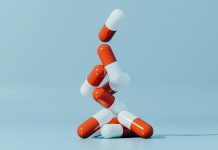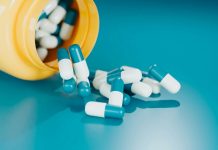
In the United States, an estimated 10 million people 50 years old and older have osteoporosis. Most of these people are women, but about 2 million are men.
Osteoporosis is a disease marked by significant bone loss and reduced bone strength, leading to an increased risk of fractures.
Osteoporosis causes bones to become weak and brittle, so brittle that a fall or even mild stresses such as bending over, or coughing can cause a fracture.
Osteoporosis-related fractures most commonly occur in the hip, wrist, or spine.
For Noreen Geraghty of Wallingford, raising the watering can over her head to water her plants and a slight twist resulted in a spine fracture.
Geraghty had been diagnosed with osteoporosis many years ago when the orthopedic doctor’s office she worked in at the time got a new machine that measured bone density.
Geraghty was prone to osteoporosis; she is small in stature and as a child had had gastric surgery that caused malabsorption issues.
Non-modifiable risk factors for osteoporosis include being female, over age fifty, having a small frame, having an endocrine disorder, having a family member with the disease, and being Caucasian or Asian.
Osteoporosis is more likely to occur in people who have low calcium intake, eating disorders, celiac disease, and those who have asthma.
Geraghty began seeing Dr. Lawrence Raisz a long-serving leader of the UConn Health community and a national and international expert in the field of bone health until he passed in 2010.
At that time, she moved her care to Dr. Faryal Mirza, clinical director, Division of Endocrinology and Metabolism at UConn Health.
Dr. Mirza, who has worked at UConn Health for 20 years, started her career as a primary care physician before moving to endocrinology.
“Osteoporosis is known as the silent disease because it does not cause pain until you break a bone,” says Dr. Mirza. “There are so many conditions that can lead to osteoporosis, and I watch for those.”
Fragility-related fractures are the most common sign of osteoporosis. Fragility fractures are fractures that happen when you fall from standing heights.
These occur when even mild impact causes a fracture of the wrist, back, hip, or other bones.
Osteoporosis puts patients at significantly high risk for hip fractures, and may end up in a nursing home for rehabilitation. Those who fracture a hip over the age of 80 often die within the first year after breaking a hip.
While some loss of bone is a normal part of aging, women are four times more likely than men to get osteoporosis due to the loss of estrogen during menopause.
“To prevent osteoporosis, it is important to have a well-balanced diet that includes adequate amounts of calcium and vitamin D, which is best to get through food,” says Dr. Mirza.
Over-the-counter calcium and vitamin D supplements are also available to be used as recommended. As with anything, moderation is key as too much calcium can cause issues such as kidney stones and heart disease.
Too much vitamin D also increases the risk for kidney stones. Dr. Mirza suggests 1000 mg of calcium a day for most, starting in their 20s and 30s.
However, she suggests that patients talk to their doctor about what is best for their individual needs.
Exercise is also extremely helpful for bone strength. Dr. Mirza explains that while all exercise is good, it’s important to do exercise like walking or running so that you stomp the pavement.
The action of stomping the ground sends messages to bone-forming cells to get activated. She recommends exercising 30 minutes of walking five to six times a week, which is good for the heart too.
She tells her patients if they can’t get out to walk, to use an online video or walk/march in place in your home.
A bone density test is required to confirm the diagnosis of osteoporosis.
UConn Health has recently obtained new state-of-the-art GE Prodigy Dexa machines that provide information about body composition analysis, bone mineral density, lean and fat tissue mass, and a TBS (Trabecular Bone Score) which is an advanced imaging software and is an indicator of bone microarchitecture’s quality and an independent parameter for fracture risk prediction.
“We have patients that come from all over the state of Connecticut, New England, and New York.
For patients coming from a distance, we can set up the bone density test the same day as their doctor appointment, so everything can be done in one trip to UConn Health,” says Dr. Mirza.
There are several medications available to help those with osteoporosis; however, Dr. Mirza finds many patients hesitant to pursue treatment because of the potential side effects of the medications.
This was an issue for Geraghty, who has a history of not tolerating the side effects of medications.
“Dr. Mirza knows my limitations with medications and has been conservative with my care,” says Geraghty. “She takes time with me because of my history of side effects to medications.”
Recently, Dr. Mirza found a bone building medication that would be effective for Geraghty and not cause side effects.
Geraghty has taken the medication, which is an injection once a month, for a year and just finished.
She is now starting a next course of a different medication, which is an injection every six months, and decreases the breakdown of the bone.
“Each person and their risk factors and tolerance to medication is different, so we monitor them closely, but most importantly we have to listen to our patients,” says Dr. Mirza.
“I would rather know where I stand with medications and make a choice on risk versus reward if there are side effects of a medication,” says Geraghty. “Dr. Mirza has been a great asset in helping me with those decisions.”
Osteoporosis is a disease of aging and increasing age increases the risk of fractures.
As we get older even if our bone density remains exactly the same the risk of fracture will continue to increase. Your risk will get to the point of needing treatment if you live long enough.
Geraghty is now more careful and hesitant in her movements.
Osteoporosis has slowed her down, and that is hard for her as she has always been a busy person doing many things, but she now has to think more about what she can do safely.
Dr. Mirza suggests that anyone who has had a fragility fracture in the past should not ignore it, and should talk to their doctor about getting a bone density test.
Written by Jennifer Walker.
If you care about pain, please read studies about vitamin K deficiency linked to hip fractures in old people, and these vitamins could help reduce bone fracture risk.
For more information about wellness, please see recent studies that Krill oil could improve muscle health in older people, and Jarlsberg cheese could help prevent bone thinning disease.



